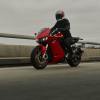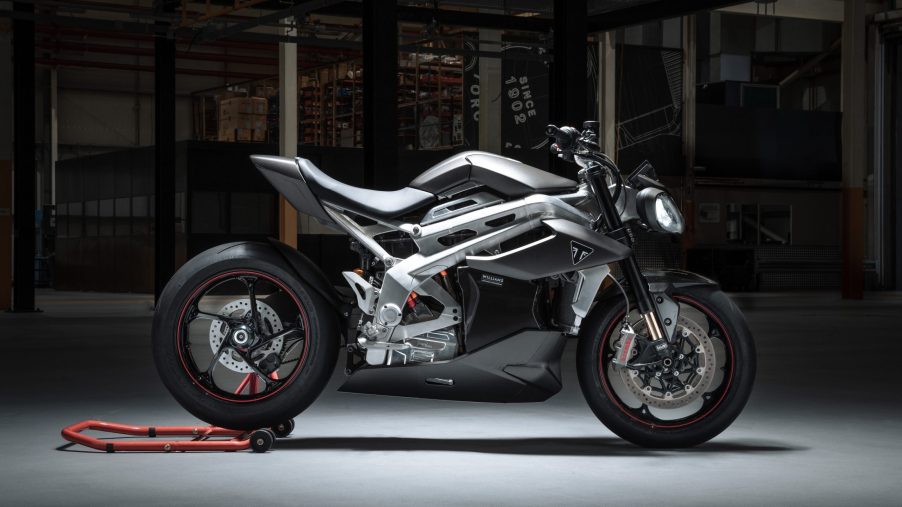
Triumph TE-1 Is Now a Working Electric Motorcycle Prototype
These days, motorcycle companies are starting to embrace electrification just like automakers. Some, such as Cake and Zero, have been electric from the start, while others like Harley-Davidson and Husqvarna are adding EVs to their lineups. Or at least, to their future lineups. And after months of radio silence, the Triumph TE-1 is ready to stretch its electric legs.
The Triumph TE-1 went from a sketch to a functional electric motorcycle
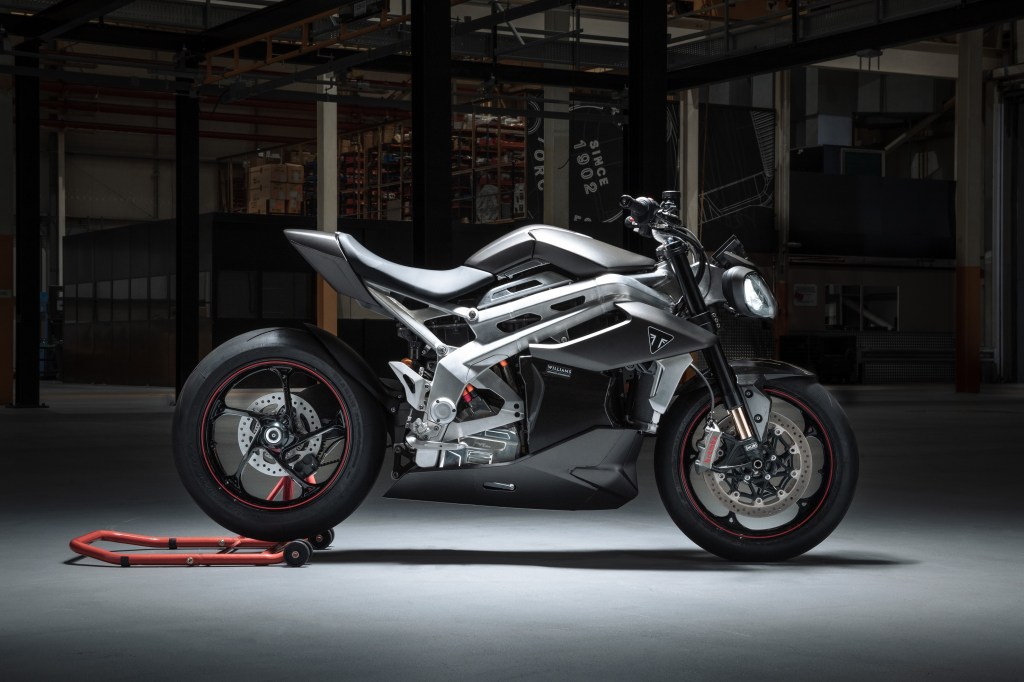
Although British brand Triumph is arguably best-known for its retro bikes, it makes other models, including scramblers and ADVs. And last year, it announced plans to develop its first electric motorcycle, dubbed ‘TE-1.’
At the time, the TE-1 only existed as a lone battery pack and some sketches. But the project has progressed in the last few months from Phase 2 to Phase 4. While we’ll get to what exactly that means shortly, for now, know that this bike isn’t just a drawing anymore. After initial component testing using a donor ‘mule’ bike, the Triumph TE-1 is now a real, functioning motorcycle.
At first glance, the TE-1 bears a familial resemblance to the current Speed Triple. And that appears to be intentional, Cycle World says. However, while some of the TE-1’s components mirror its gas-powered relative’s gear, these bikes are unrelated. The TE-1 has a bespoke chassis, with a unique frame, sub-frame, wheels, and body panels. And while its Brembo brakes and Ohlins inverted forks are common sights in the high-end motorcycle world, its Ohlins RSU rear mono-shock is a prototype unit. Also, no other current Triumph motorcycle uses a carbon belt drive.
As for the rest of the bike, the Triumph TE-1 is a collaborative project. Williams Advanced Engineering, one arm of the famous F1 team, provided the lithium-ion battery pack as well as its cooling system and charging hookups. Meanwhile, Integral Powertrain developed the motorcycle’s inverter and electric motor. And the University of Warwick’s pre-trial simulations expedited the initial testing process.
All of that, though, happened during the project’s so-called Phase 3 stage. Now, it’s time for the Triumph TE-1 to step into Phase 4.
Now in Phase 4, Triumph is gearing up to properly test the TE-1
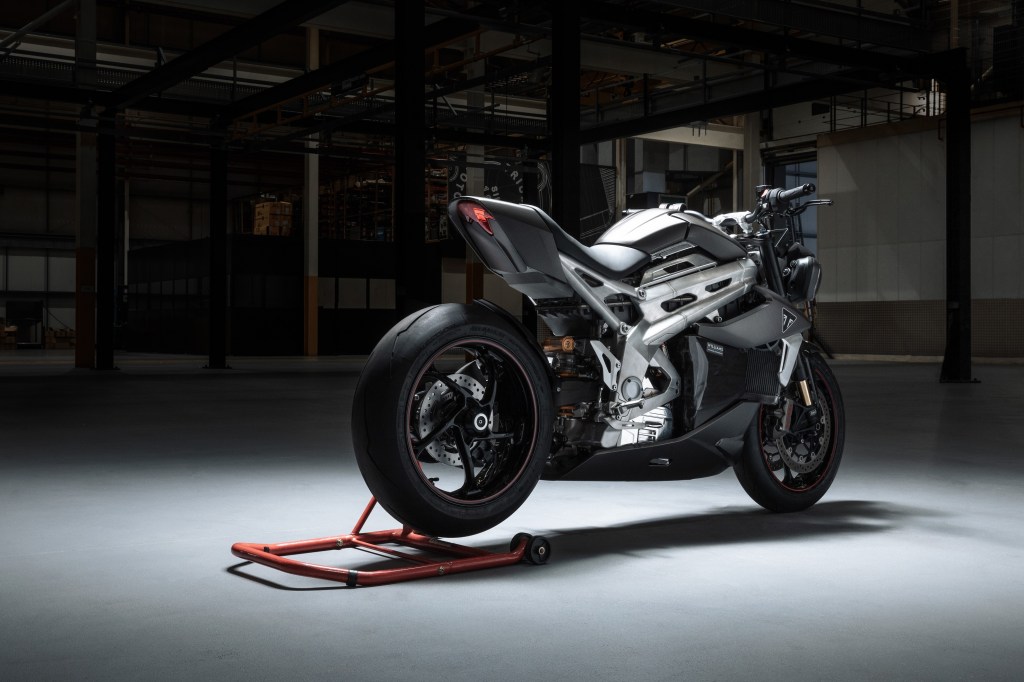
Triumph TE-1 prototype rear 3/4 | Triumph 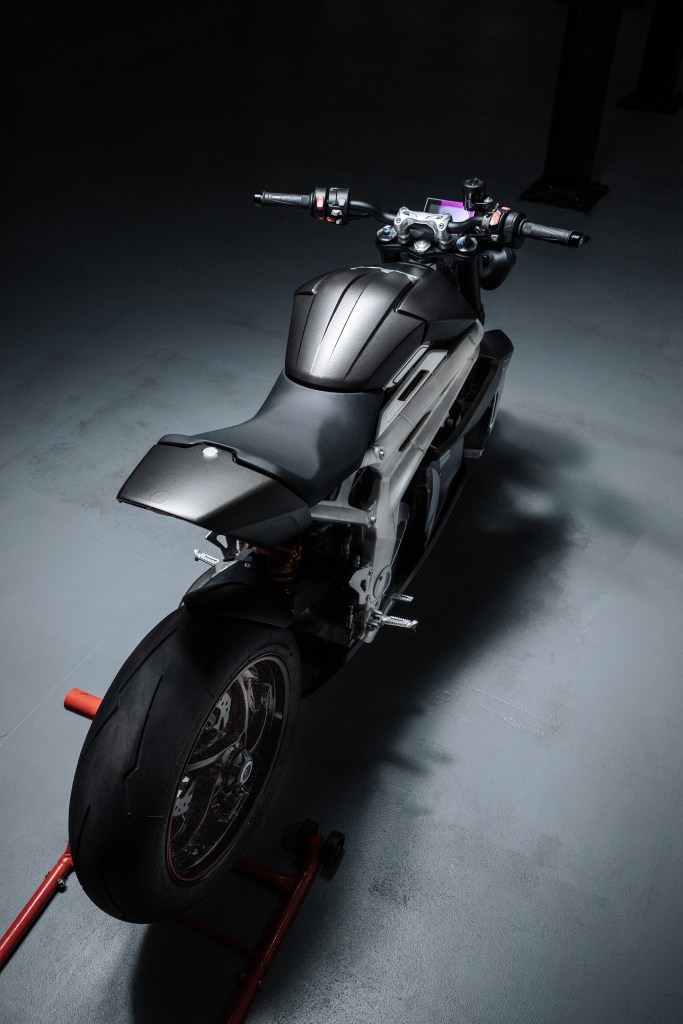
Triumph TE-1 prototype rear overhead | Triumph
Phase 3 of the Triumph TE-1 involved building this final prototype. And in Phase 4, Triumph is going to put it through the wringer. Over the next six months, the TE-1 prototype will face a battery (no pun intended) of tests to eke out any flaws or deficiencies.
In the rolling-road portion, Triumph plans to tweak the TE-1’s throttle calibration, engine software, and motor output, as well as assess the battery, cooling systems, and software. Once that’s over, the TE-1 will head to the track to refine its safety systems, such as its traction control, as well as its handling, regenerative braking, and performance. This kind of testing is par for the course of most motor vehicles, motorcycles or otherwise, but it’s the first time Triumph is testing something electric.
Given its prototype status, Triumph understandably hasn’t released all of the TE-1’s specs. We do know, though, that Triumph is chasing a 485-lb curb weight, 120-mile range, and 174-hp peak output. In addition, Integral Powertrain’s Chief Technical Officer claims the TE-1 could theoretically make over 670 hp, MCN reports.
While that likely won’t be the final road-legal number, it would make the TE-1 over three times as powerful as the Kawasaki Ninja H2 SX SE. And the latter bike weighs 591 pounds. If Triumph can meet its goals, its first electric motorcycle could offer a truly electrifying level of performance.
When will the TE-1 go on sale?
Triumph estimates Phase 4 testing will take roughly six months and plans to show off the fully-tested TE-1 by summer 2022. But it’s still not technically confirmed for production—yet.
As noted earlier, though, multiple other brands are pursuing electric motorcycles. Harley-Davidson’s LiveWire is now its own sub-brand, and Ducati’s MotoE supplier deal might hint at an Italian two-wheeled EV. And that’s not counting the numerous electric motorcycle startups vying for market share. So, Triumph has plenty of incentive to pursue a road-legal version of the TE-1.
Based on the current testing schedule, it’s likely a production electric Triumph won’t arrive until 2023 at the earliest. Again, that’s assuming such a bike is in the works. But seeing how much effort the build team has put into the TE-1, it would be a shame to see it go to waste.
Follow more updates from MotorBiscuit on our Facebook page.

